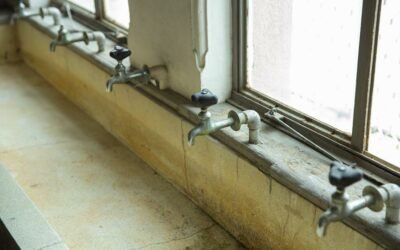Can't wait to get your hands dirty and create something amazing? Discover the art of clay molding!
In this article, we'll explore the properties of clay, the essential tools and equipment you'll need, and the techniques for shaping clay into beautiful works of art.
We'll also uncover common mistakes to avoid and even delve into advanced clay molding techniques.
So, grab your apron and let's dive into the world of clay molding!
Key Takeaways
- Clay is a versatile material that can be shaped and molded into various forms.
- Clay has a smooth and pliable texture, allowing for easy manipulation.
- Clay can retain its structure without collapsing or losing its shape.
- Clay molding techniques can be enhanced through the use of tools and equipment, such as clay modeling tools, a rolling pin, sponges, and a wire cutter.
The Properties of Clay
When working with clay, understanding its properties is essential in order to mold it effectively. Clay is a versatile material that can be shaped and molded into various forms. Its texture is smooth and pliable, allowing you to easily manipulate it with your hands. As you knead the clay, you can feel its softness and flexibility, which makes it perfect for sculpting intricate details. The color of the clay can vary, ranging from a pale beige to a rich earthy tone, giving your creations a natural and organic look.
One important property of clay is its ability to hold its shape. Once you have molded the clay into your desired form, it will retain its structure without collapsing or losing its shape. This is due to the clay's cohesion and plasticity, allowing it to hold together and maintain its integrity. Additionally, clay has a high level of moisture, which gives it a sticky and adhesive quality. This moisture content not only helps with the manipulation of the clay but also plays a crucial role in the drying and firing process.
Understanding the properties of clay allows you to work with it confidently and effectively. By harnessing its pliability, color, and ability to hold its shape, you can create stunning and unique pieces of art. So, take the time to explore and experiment with clay, and let its properties guide your creative journey.
Tools and Equipment for Clay Molding
To effectively mold clay, you'll need a variety of tools and equipment that will aid you in shaping and manipulating the material. Here are four essential items that you should have in your clay molding toolkit:
- Clay Modeling Tools: These tools come in various shapes and sizes and are designed specifically for working with clay. They're typically made of metal or wood and have different tips and edges that allow you to create fine details, smooth surfaces, and precise lines. From wire loops for cutting and shaping to wooden modeling tools for smoothing and blending, having a selection of clay modeling tools will greatly enhance your ability to sculpt and shape clay.
- Rolling Pin: A rolling pin is a versatile tool that's used to flatten and roll out clay. It helps you achieve an even thickness and is especially useful for creating slabs of clay that can be used for various purposes, such as building walls or creating tiles. Look for a rolling pin that's made of a non-stick material, such as wood or acrylic, to prevent the clay from sticking to the surface.
- Sponges: Sponges are essential for keeping your clay moist and workable. They can be used to add or remove water from the clay, depending on your needs. A damp sponge helps prevent the clay from drying out too quickly, allowing you to work with it for longer periods. It also helps you smooth out any imperfections or rough edges on your clay creations.
- Wire Cutter: A wire cutter is a handy tool for cutting clay into smaller pieces or removing excess clay from your projects. It's particularly useful for trimming and shaping clay that has dried and hardened. Look for a wire cutter with sharp blades and a comfortable grip for precise and effortless cutting.
Having these essential tools and equipment will make your clay molding experience more enjoyable and allow you to create beautiful and detailed clay sculptures. So gather your toolkit, unleash your creativity, and start molding!
Techniques for Shaping Clay
Once you have gathered the essential tools and equipment for clay molding, it's time to explore various techniques for shaping clay. Shaping clay is an art form that allows you to unleash your creativity and transform a simple lump of clay into a masterpiece. There are several techniques you can use to shape clay, each with its own unique effect and style. Let's take a look at some of the most popular techniques:
| Technique | Description |
|---|---|
| Pinching | Using your fingers and thumb, gently pinch and pull the clay to create various shapes and forms. This technique is great for creating small, intricate details. |
| Coiling | Roll out long, snake-like coils of clay and stack them on top of each other to create your desired shape. Coiling is a versatile technique that allows for both precision and volume. |
| Slab construction | Roll out flat sheets of clay and cut them into different shapes. These pieces can then be assembled and joined together to create larger, more complex structures. |
| Wheel throwing | Using a pottery wheel, you can spin the clay while using your hands and various tools to shape it into bowls, vases, or any other symmetrical form you desire. |
These techniques are just a starting point, and you can experiment and combine them to create your own unique style. Remember to keep practicing and exploring different techniques to enhance your clay molding skills. Happy shaping!
Common Mistakes to Avoid in Clay Molding
To avoid common mistakes in clay molding, you should be aware of some key factors. Here are four important things to keep in mind:
- Moisture control: One of the biggest mistakes beginners make isn't properly controlling the moisture in their clay. If the clay is too wet, it can become mushy and lose its shape. On the other hand, if it's too dry, it can crack and break. Finding the right balance is crucial for successful molding.
- Proper conditioning: Clay needs to be properly conditioned before you start working with it. This involves kneading and warming it up to make it pliable and easy to shape. Neglecting this step can result in uneven textures and weak structures.
- Support during drying: Clay needs to be supported properly during the drying process to prevent warping and cracking. It's important to use armatures or internal supports when creating larger or more complex sculptures. Additionally, allowing the clay to dry slowly and evenly can help prevent these issues.
- Patience and practice: Clay molding is a skill that takes time to master. It's important to be patient with yourself and to practice regularly. Don't get discouraged by mistakes or failures, but instead learn from them and keep improving.
Exploring Advanced Clay Molding Techniques
As you delve deeper into clay molding, you can expand your skills by exploring a variety of advanced techniques. These techniques won't only enhance your artistic abilities but also allow you to create more intricate and detailed clay sculptures.
One advanced technique you can explore is called 'texturing.' This involves adding texture to your clay to create a more realistic or interesting surface. You can achieve this by using various tools such as brushes, sponges, or even everyday objects like toothpicks or forks. By experimenting with different textures, you can create unique and visually appealing sculptures.
Another advanced technique is 'slip casting.' This involves creating a mold from an existing object and then pouring liquid clay, known as slip, into the mold. This allows you to replicate intricate details and create multiple identical pieces. Slip casting is often used in ceramics and pottery to create functional items like cups or bowls.
Furthermore, you can explore the technique of 'sgraffito.' This involves scratching or carving designs into the clay's surface. By layering different colors of clay and then scratching away the top layer, you can create beautiful and intricate designs. Sgraffito is a versatile technique that can be used to add depth and dimension to your clay sculptures.
Conclusion
As you put your hands on the cool, pliable clay and started molding, a world of possibilities opened up before you. With the right techniques and tools, you discovered the art of shaping clay into beautiful and intricate forms.
From basic shapes to advanced techniques, you explored the limitless potential of this versatile medium.
As you continue on this creative journey, remember to avoid common mistakes and keep pushing the boundaries of your clay molding skills.
The world is waiting to see what wonders you'll create next.






0 Comments